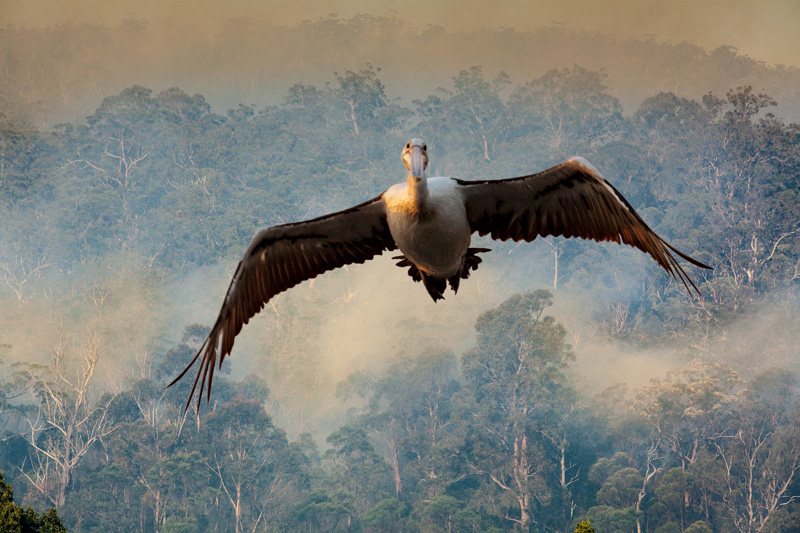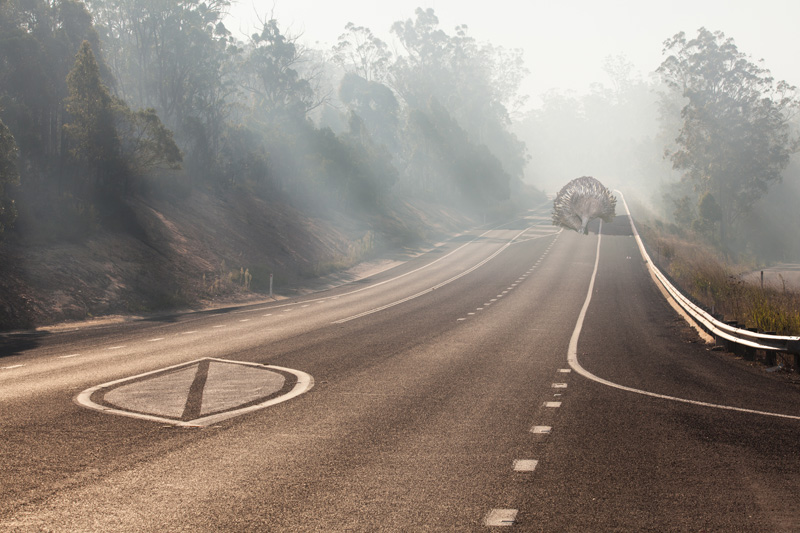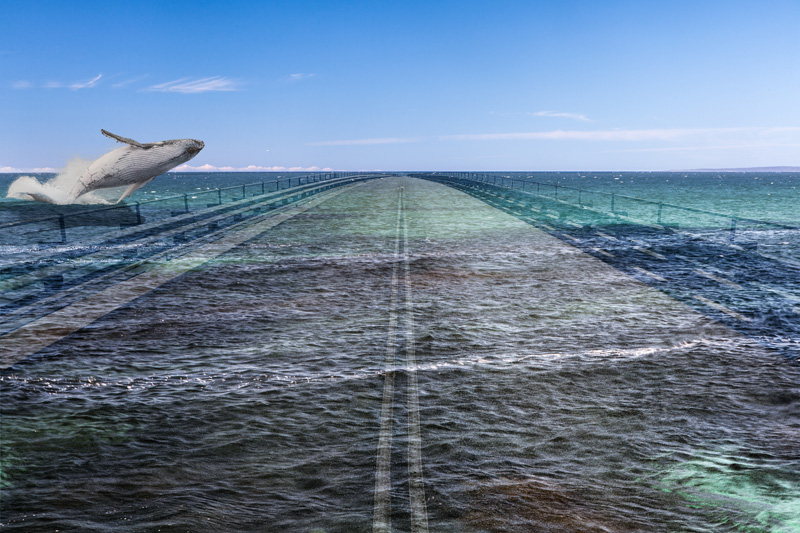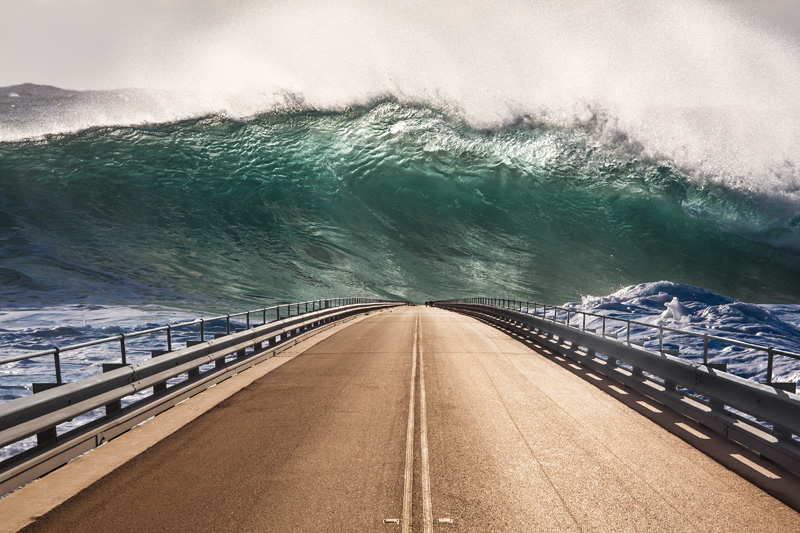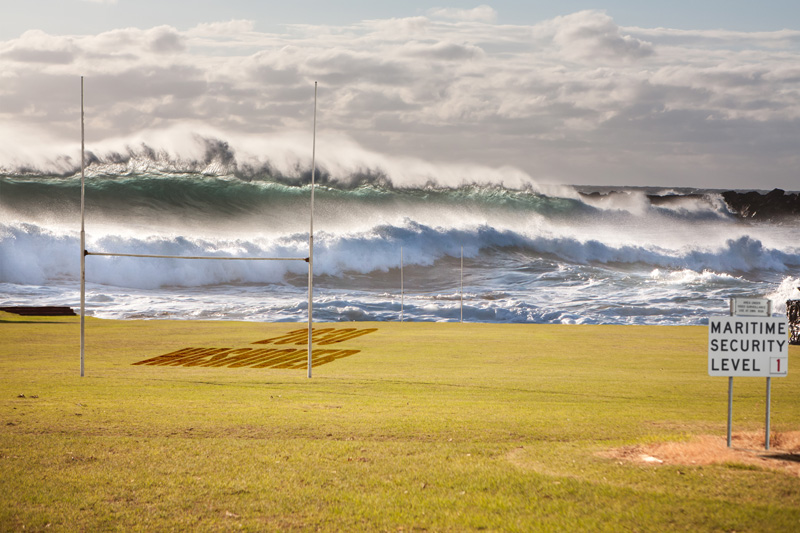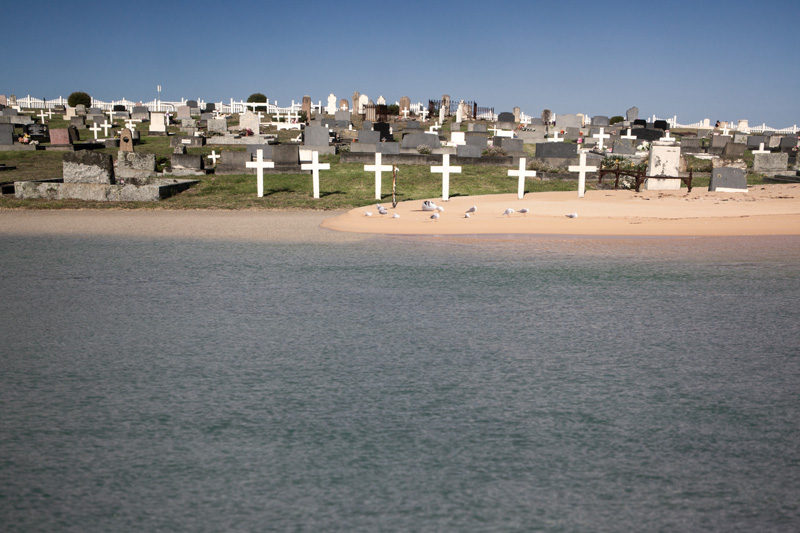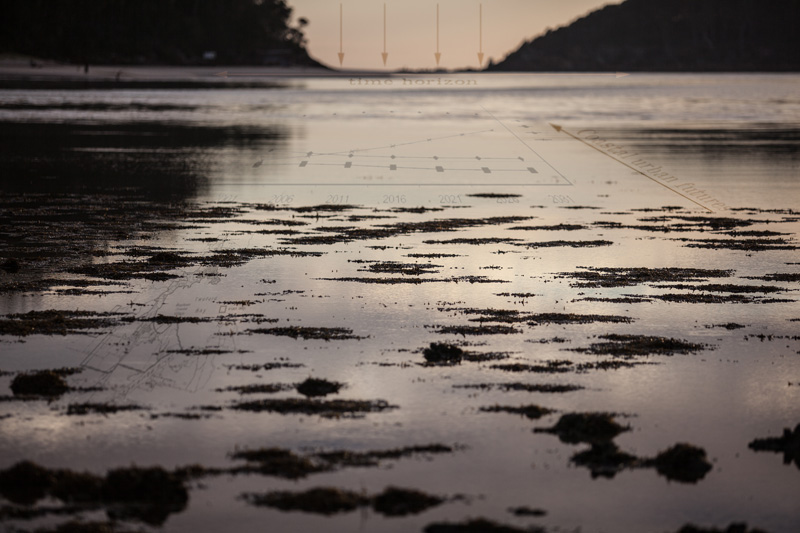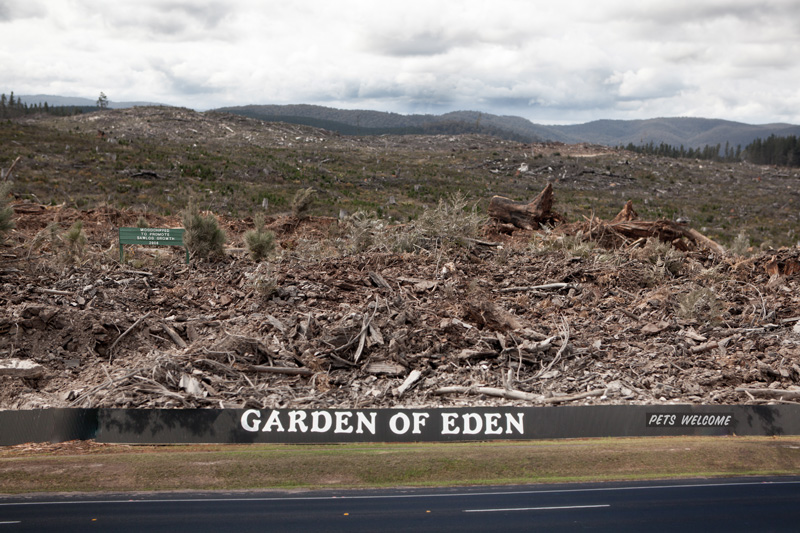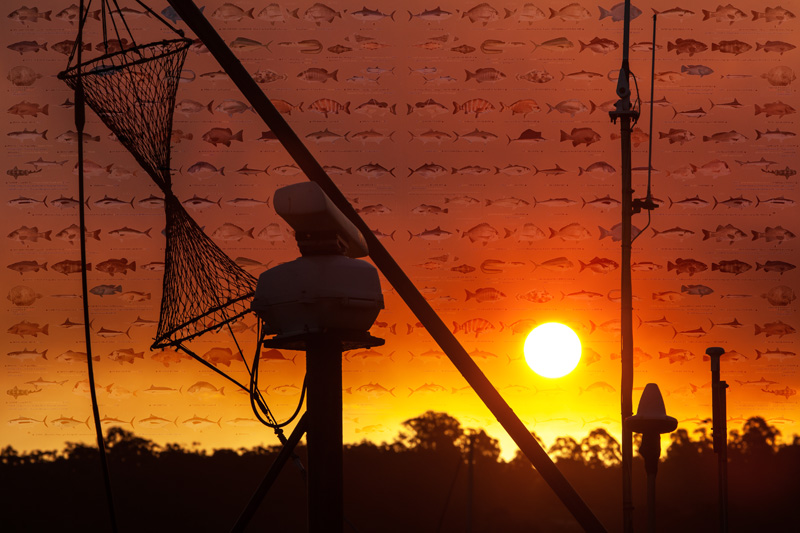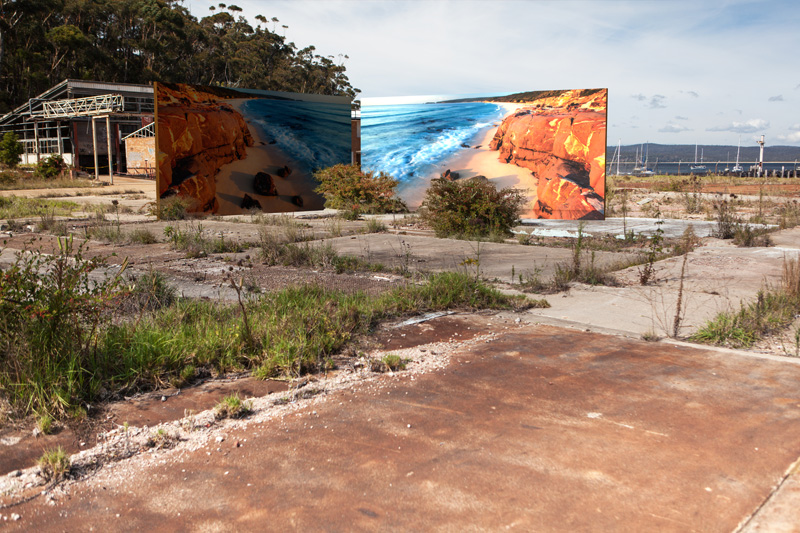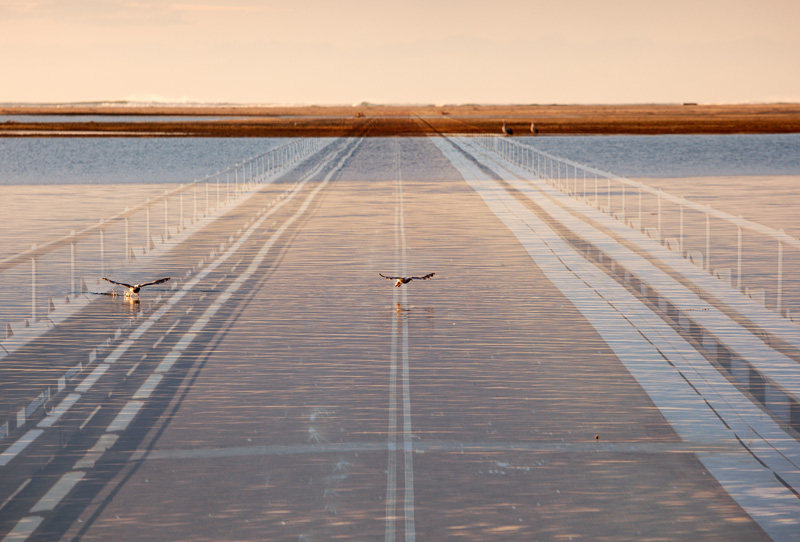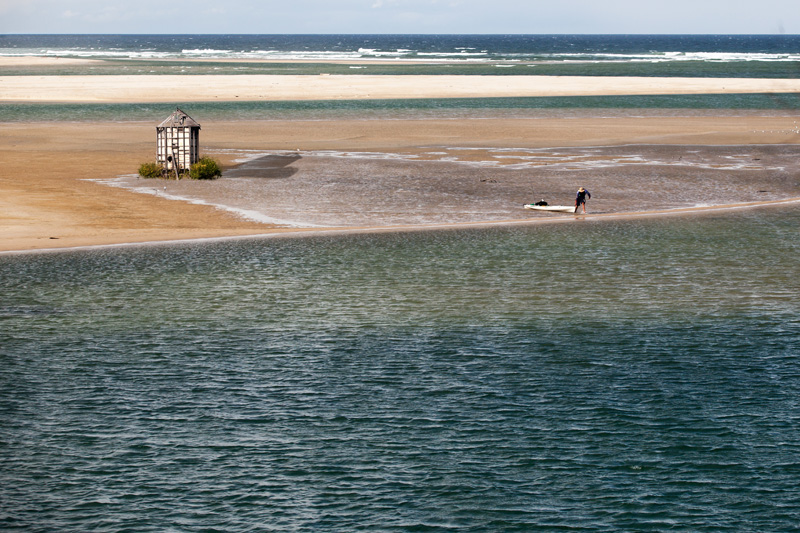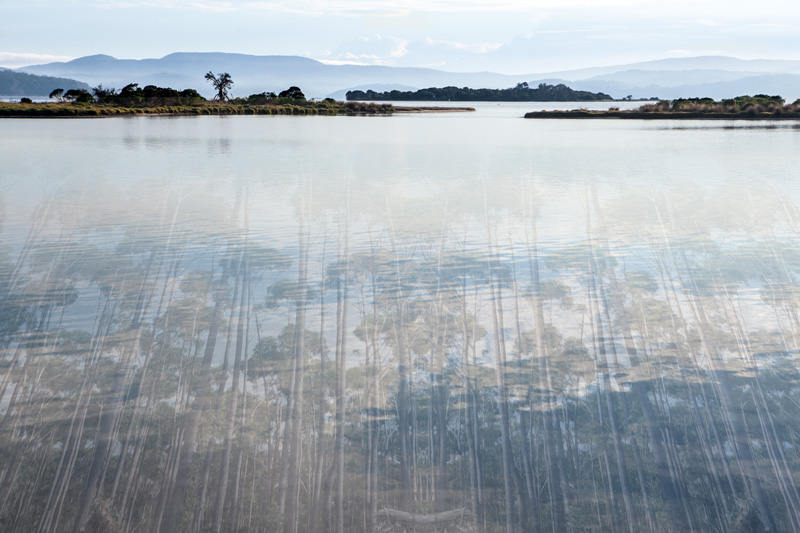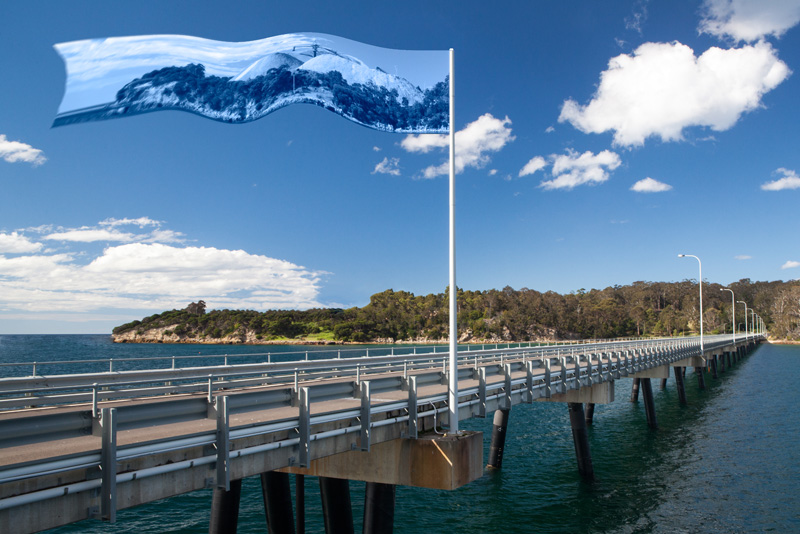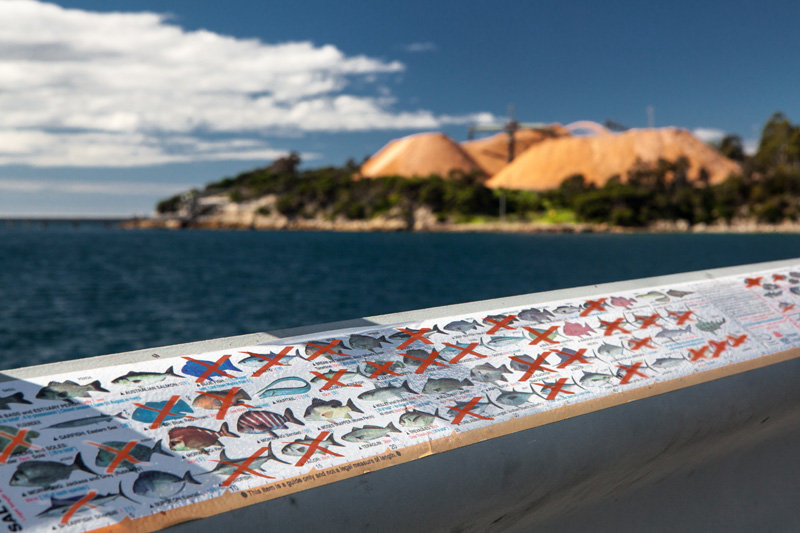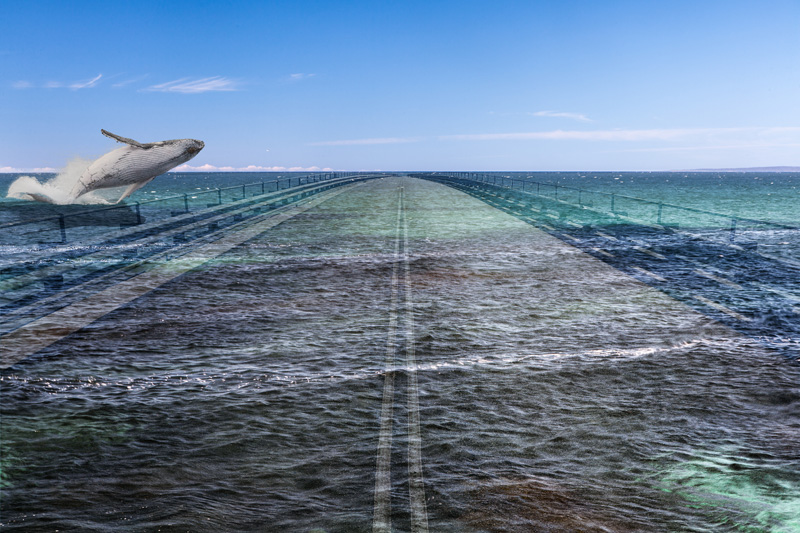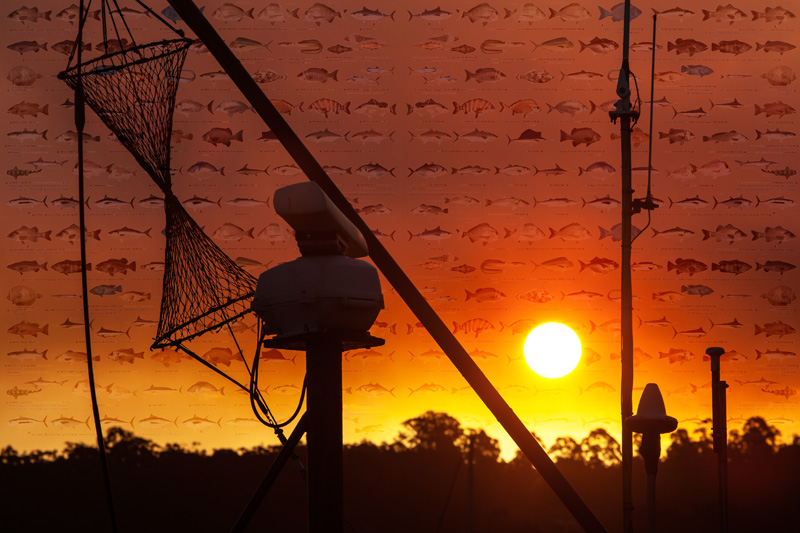This image is a composite of two photographs. The background was taken inland from Merimbula, during a day of preventative back-burning. Dense smoke clouds emerged from many locations in the forest (part of the Southeast Forests National Park) and wafted over the treetops and nearby rural properties. There was a strong smell of smoky eucalyptus, and the atmosphere was lit with a glowing golden-brown haze. The pelican was photographed several hundred kilometres away (and several months earlier) in sunset light at Marlo in Gippsland. I processed both images with extra-warm white balance (about 6500oK), and applied some graininess to both images to accentuate the gritty sepia tonings.
I was thinking at the time of the impact of human intervention into the landscape, and the drastic changes that this has brought to the life of birds and animals of the region. I imagined the pelican fleeing the terror of the fire, and looking (accusingly?) out of the frame at the viewer. The same concept motivated the Echidna flight and Humpback flight images.
The background image depicts the Princes Highway near Merimbula, at the junction with the Yellow Pinch Road. It was taken in an autumn mid-afternoon, during burning-off operations in the adjacent forest. The light through the trees was filtered by the smoke, which also produced a hazy coppery light, almost (but not quite) like the warm light of sunset. The echidna was photographed a little before dawn (the following day), at Haycock Point in the Ben Boyd National Park, south of Pambula. Uncharacteristically for echidnas, he (or she?) seemed relatively unperturbed by my presence, and posed happily for some photographs before ambling away.
Like the Pelican flight image, this composite image was inspired by my thoughts of ‘wildlife’ fleeing from human disruption of their habitat. The massive size of this ‘mega-fauna monotreme’ is intended to suggest that it not just an individual creature, but is somehow representative of the species, or of native creatures in general.
A three-image composite. One of them – the background of ocean and sky – is itself based on another five separate images, combined as a high-dynamic range (HDR) image to give the scene a more dramatic, graphic sort of look. This was taken in early morning light in the Ben Boyd National Park. The ‘road’ is actually a wharf, extracted from a picture of the Edrom Point naval facility on Twofold Bay. Although humpback whales are seasonally prolific along the far south coast of NSW, I was in the region during autumn, when they are not around. So the whale in this image is one that I photographed in June 2012 in King George Sound, near Albany, Western Australia.
There can be few sights in nature as powerfully exhilarating as the sight of a breaching whale. After the near-extinction of many whale species during the 19th and 20th century commercial whaling, whale numbers are strongly recovering in the region. Twofold Bay was the site of a number of whaling stations, which operated until the last one (Davidson’s) ceased in 1929. Now the boats head out from Snug Cove at Eden for the purpose of watching (rather than catching) whales.
As with the other ‘Flight’ images (Echidna flight, Pelican flight) I wanted to allude to the disruption of habitat by human activity. In this instance the whale’s exultant launch into the air looks to be heading for a hard landing.

